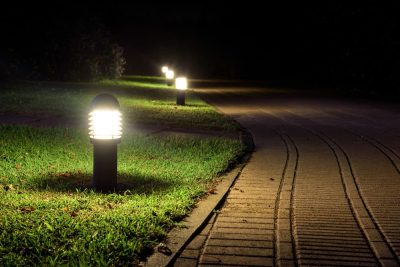
Designing a mosquito-resilient landscape means shaping your outdoor space to look beautiful while naturally preventing mosquito infestations.
Building this kind of landscape involves practical planning and mindful choices. These include selecting appropriate plants, materials, and layouts to reduce standing water and create airflow. Below, we discuss these and more ideas to keep mosquitoes away while enhancing your home’s comfort and outdoor appeal.
Design Strategies for a Mosquito-Resilient Landscape
Mosquitoes thrive in areas with standing water, such as clogged gutters, birdbaths, or poorly drained soil, which provide ideal breeding sites. Dense vegetation and heavy shade give them cool, sheltered resting spots during the day, while humid climates and rainy seasons increase their population. Even small puddles or decorative containers can attract them. Here are strategies to minimize those attractions and design a yard that naturally keeps mosquito activity under control.
Expert Inspection & Initial Treatment
A professional assessment helps identify hidden breeding areas such as clogged drains, damp soil, or neglected water features. This step ensures your design efforts start from a clean slate instead of competing with an existing infestation. It’s always better to call a local expert, since they understand the specific mosquito species, breeding cycles, and climate patterns in your region.
Local specialists also use products and timing suitable for local weather, which improves long-term results. For instance, you can visit LaJaunies.com to see where their team offers mosquito control services tailored to Louisiana’s humid environment.
Mosquito treatments target both larvae and adult mosquitoes. Nonetheless, a one-time visit may not eliminate the problem. Thus, regular follow-ups by experts assess the site for new breeding spots and check how long treatments remain effective. For instance, pest removal experts serving Ft. Lauderdale provide monthly mosquito control programs that include inspections, larvicide applications, and fogging treatments.
Plan Your Layout With Prevention in Mind
Mosquitoes breed in still water, so the way your landscape handles rain or irrigation makes a significant difference. As such, proper grading ensures water flows away from the home instead of collecting in low areas where larvae can develop. Installing drainage channels, dry creek beds, or permeable pathways helps keep soil dry and prevents puddles from forming after rainfall. Even small changes in slope can stop water from stagnating near flower beds or patios.
Good airflow is another important part of the design. When air moves freely through open spaces, it dries damp areas faster and makes conditions less inviting to mosquitoes. Keep trees and shrubs trimmed to avoid dense canopies that trap humidity and block breezes. Open layouts also allow sunlight to reach the ground, naturally reducing the shaded zones mosquitoes prefer.
Choose Plants That Naturally Repel Mosquitoes
Plants can serve as natural deterrents while adding color and fragrance to your outdoor space. For instance, some species produce strong essential oils that mosquitoes find unpleasant. Citronella is one of the best-known examples, and growing it in pots near patios or entryways helps mask scents that attract mosquitoes.
Lavender, with its soothing aroma, not only repels mosquitoes but also attracts pollinators, such as bees and butterflies. Basil emits a sharp scent that keeps mosquitoes away from garden beds and doubles as a useful herb for cooking.
Marigolds are another powerful option, as their distinct fragrance disrupts mosquito activity while bringing bright color to borders or containers. Grouping these plants near areas where people gather, such as seating zones and walkways, maximizes their effect.
Manage Water Features Responsibly
Water features bring calm and beauty to a yard, but they can also attract mosquitoes. For instance, stagnant water provides the perfect breeding ground for larvae. Therefore, be careful with ponds, fountains, and birdbaths. Circulating water through pumps or fountains ensures oxygen levels remain high and prevents mosquitoes from laying eggs. Additionally, cleaning filters and removing debris, such as fallen leaves or algae, also maintains water quality and discourages insect activity.
Introducing natural predators is another effective solution that does not involve chemicals. Fish species such as guppies, goldfish, or mosquito fish feed on mosquito larvae to maintain ecological balance. Dragonflies and their nymphs are equally valuable allies, as they consume both larvae and adult mosquitoes.
Optimize Lighting and Airflow
Lighting and airflow play a significant role in mosquito control than many homeowners realize. For instance, bright white lights attract insects, including mosquitoes, because they mimic the color and warmth of natural light sources.
Switching to yellow or LED bug lights reduces this attraction while maintaining sufficient brightness for visibility and safety. Placing outdoor lights farther from seating areas or directing them downward also helps limit mosquitoes from gathering near people. Additionally, air movement makes it harder for mosquitoes to fly and land. A light breeze disrupts their flight path, so fans become a simple but powerful deterrent.
Maintain Your Landscape Consistently
Overgrown lawns, thick shrubs, and piles of debris create shaded, humid areas where mosquitoes rest during the day. Hence, keeping grass short and trimming bushes allows sunlight and air to move freely. It dries out the ground and discourages pests. Even clearing fallen leaves and branches can make a noticeable difference. Regular care turns prevention into a routine, helping your landscape stay healthy and pest-free all year.
Select Ground Materials That Stay Dry and Clean
Ground materials influence how well your yard drains after rain or watering. Therefore, choosing options like gravel, mulch, or permeable pavers allows water to filter through the soil instead of pooling on the surface. It prevents damp spots that attract mosquitoes and keeps your outdoor areas easier to maintain. These materials also improve stability around garden beds and pathways, reducing mud and standing water that can become breeding grounds.
Dense ground covers, heavy leaf litter, and thick mulch layers trap moisture and create shaded hiding places for mosquitoes. Thus, clearing these areas and replacing them with lighter, well-draining materials keeps the ground dry and clean.
Conclusion
A mosquito-resilient landscape is comfortable, healthy, and protected from mosquitoes. For instance, open layouts with steady airflow keep the area cool and less inviting to pests. Additionally, planting natural repellents like citronella and lavender adds beauty but also discourages mosquito activity. Together, these features create a space that supports relaxation without the constant nuisance of mosquitoes.








